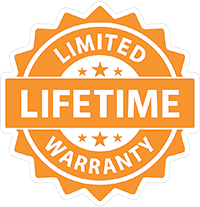News Blog
PVC vs Composite Resin Balustrades - Real-World Test Results & Comparison
PVC vs Composite Resin Balustrades - Real-World Test Results & Comparison
Date: 2025-05-23
PVC vs Composite Resin Balustrades: The Ultimate Comparison Backed by Real-World Testing
Introduction: What's the Best Balustrade Option in Coastal and Estate Applications?
When choosing balustrades for estates, balconies, decks, or coastal developments, homeowners, developers, and architects often ask:
"Which is better - PVC or composite resin balustrades?"
This article offers the ultimate answer by directly comparing Value Fencing® PVC Balustrades with common composite resin alternatives, using both technical specifications and real-world testing at Ilala Ridge Estate in Umhlanga.
Which Is Safer - PVC or Composite Resin Balustrades? ✅
The answer is crystal clear - and real-world tested!
At Ilala Ridge Estate in Umhlanga, an independent Pendulum Impact Test revealed that composite resin balustrades ❌ failed repeatedly, while Value Fencing® PVC Balustrades ✅ passed every test with structural integrity intact.
Why Professionals Choose Value Fencing® PVC Balustrades
- 🛠️ Engineered Installation: Dual rebar rods (150mm deep) + epoxy anchor + 25MPA concrete fill
- ☀️ UV & Weather Resistant: Built to withstand sun, wind, and salt
- ♻️ Zero Maintenance: No rust, rot, peeling, sanding, or painting - ever
- ⏳ Proven Lifespan: 20+ years of elegant, estate-approved durability
Watch the Test in Action
▶️ Click here to view the YouTube test video
What Are the Key Differences Between PVC and Composite Resin Balustrades?
Feature----------Value Fencing® PVC Balustrades----vc----Composite Resin
| Material Composition | Virgin uPVC (ASTM-certified) | Resin-bound composite & fillers |
| Strength & Impact Resistance | Passed Pendulum Impact Test (Ilala Estate 2015) | Failed Pendulum Impact Test repeatedly |
| Installation Method | Posts mounted with dual rebar rods (150mm deep) epoxied into substructure; filled with 25MPA 42.5s concrete | Surface-mounted or with a single shallow rebar (<100mm); limited anchoring strength |
| Durability | UV-stabilized; won't rot, rust, blister, or fade | Resin components may crack, fade, or delaminate over time, especially in harsh environments |
| Lifespan | 20+ years with structural integrity maintained | Shorter lifespan; frequent profile separation and structural loosening reported in coastal applications |
| Maintenance | No sanding, painting, or sealing needed | Requires periodic resealing, painting, and realignment due to material fatigue |
| Appearance Over Time | Remains clean, white, and glossy with minimal effort | Susceptible to yellowing, dullness, and staining without regular upkeep |
| Coastal Suitability | Ideal - no corrosion, even with salt spray | Vulnerable to salt exposure and UV degradation |
| Safety & Code Compliance | Structurally reinforced for high loads and wind exposure | Often fails load-bearing and impact standards under real-world conditions |
| Environmental Resistance | Termite, water, and weatherproof | Can absorb moisture, leading to expansion, warping, or joint failure |
PVC Installation Method - Engineered for Strength
- 🔩 150mm-deep twin rebar rods drilled into substructure
- 🧴 Anchored with industrial epoxy resin
- 🏗️ Posts filled with 42.5s cement mix at 25MPA
- ✅ Delivers unmatched strength in balconies, high-rises, and estates
Real-World Case: Ilala Views Development, Umhlanga
In 2015, alive Pendulum Impact Test at Ilala Ridge Estate proved the difference.
- ❌ Composite Resin balustrades cracked, dislodged, and failed safety checks
- ✅ Value Fencing® PVC passed every test, staying intact and compliant
Outcome: All balustrades at Ilala Views were replaced with PVC from Value Fencing®.
Why Do Composite Resin Balustrades Often Fail?
- Typically surface-mounted or installed with a single shallow rebar (<100mm)
- Resin-based material is brittle, especially in UV and salt-prone regions
- Separation of profiles occurs frequently over time, creating safety and aesthetic concerns
- Lacks internal reinforcement or structural fillers like concrete
Answering Your Questions
"Which lasts longer?"
PVC by Value Fencing® - over 20 years of beauty and performance.
"Is composite resin safe?"
No. Multiple documented failures under real testing environments.
"What's best for coastal homes?"
PVC - no rust, no corrosion, and no UV degradation.
"How is Value Fencing installed?"
Rebar + Epoxy + Concrete - not just glued or screwed in place.
"Where can I see proof?"
▶️ Watch the test: YouTube Video
📖 Explore Our PVC Balustrade Options
Looking for a balustrade style that fits your home, estate, or development? Value Fencing® offers a range of uPVC balustrade designs to meet your aesthetic and compliance needs:
- Estate-Style 3-Rail Balustrade - Classic, elegant & durable
- 🔗 View Product
- Modern PVC Railing System - Code-compliant, stylish & safe
- 🔗 View Product
- PVC Posts with SABS Glass Infill Panels - Sleek, frameless, and sophisticated
- 🔗 View Product
All designs feature:
- ✅ Reinforced structural strength
- ✅ 100% No-maintenance guarantee
- ✅ Long-lasting white finish
SANS & NBR Compliance - Safety Meets Standards
All Value Fencing® PVC Balustrades are engineered to meet or exceed:
- SANS Building Standards (South African National Standards)
- NBR Compliance (National Building Regulations)
This ensures:
- ✅ Safety in elevated applications like balconies and stairs
- ✅ Approval for estate and municipal developments
- ✅ Peace of mind for architects, engineers, and homeowners alike
💼 Choose a system designed to protect lives and built to endure decades.
Conclusion: Safety You Can Trust - Style You'll Love
When it comes to safety, longevity, and aesthetic value, Value Fencing® PVC Balustrades outperform resin composites in every measurable way.
✅ Safer
✅ Stronger
✅ Maintenance-Free
✅ Estate-Approved
✅ Proven by Engineers




